Learn how to cook beans, their health benefits, how and why we soak them, and more to achieve tender, flavorful beans for every recipe and occasion!
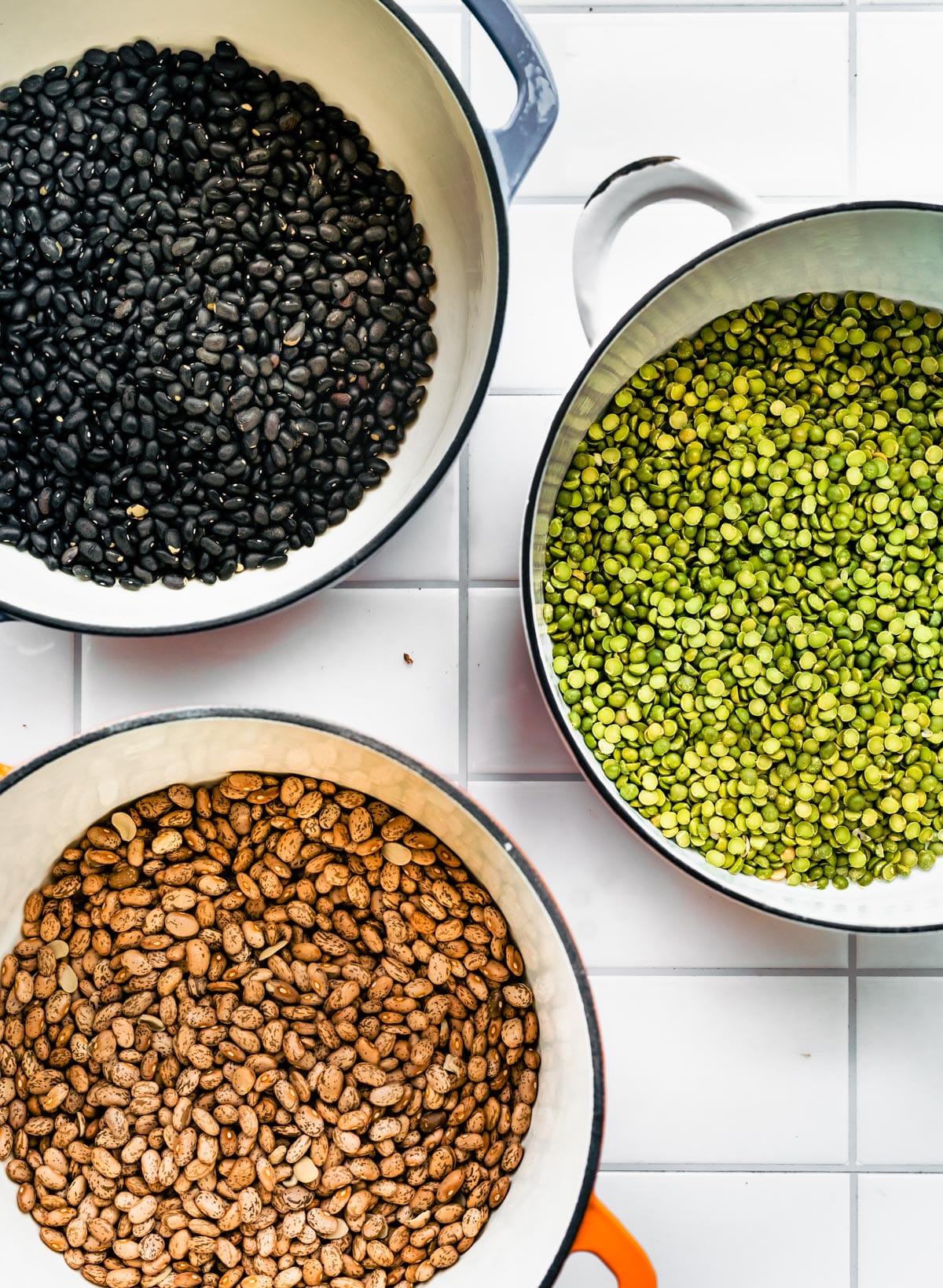
Part 2 of our installment of legumes posts, the following information will be an overview of how to cook a variety of beans. Stay tuned to learn how to cook lentils, another type of legume!
Beans, Beans the Magical Fruit…
Do you know the rest of the song? It’s been stuck in our heads for weeks because we’ve been discussing all things legumes! If you missed it, we gave an in-depth overview of legumes here detailing what they are, if they’re good for you, and more.
However, today, we’re doing a deep dive into beans – a type of legume we’re particularly fond of. Budget-friendly and versatile, they’re super delicious, but you have to know how to cook them first! So, we’re spilling all our beans (pun intended) today.
Health Benefits of Beans
Before we dive in, we thought we should note that there are over 400 different varieties of dry beans, but we’ll just be covering a few. (Source) That said, all beans are highly nutritious and great to include in most diets but are especially important for those following vegan or vegetarian ways of eating. This is due to their high amount of plant-based protein and heme-iron, both of which are difficult to come by when not consuming animal-based products.
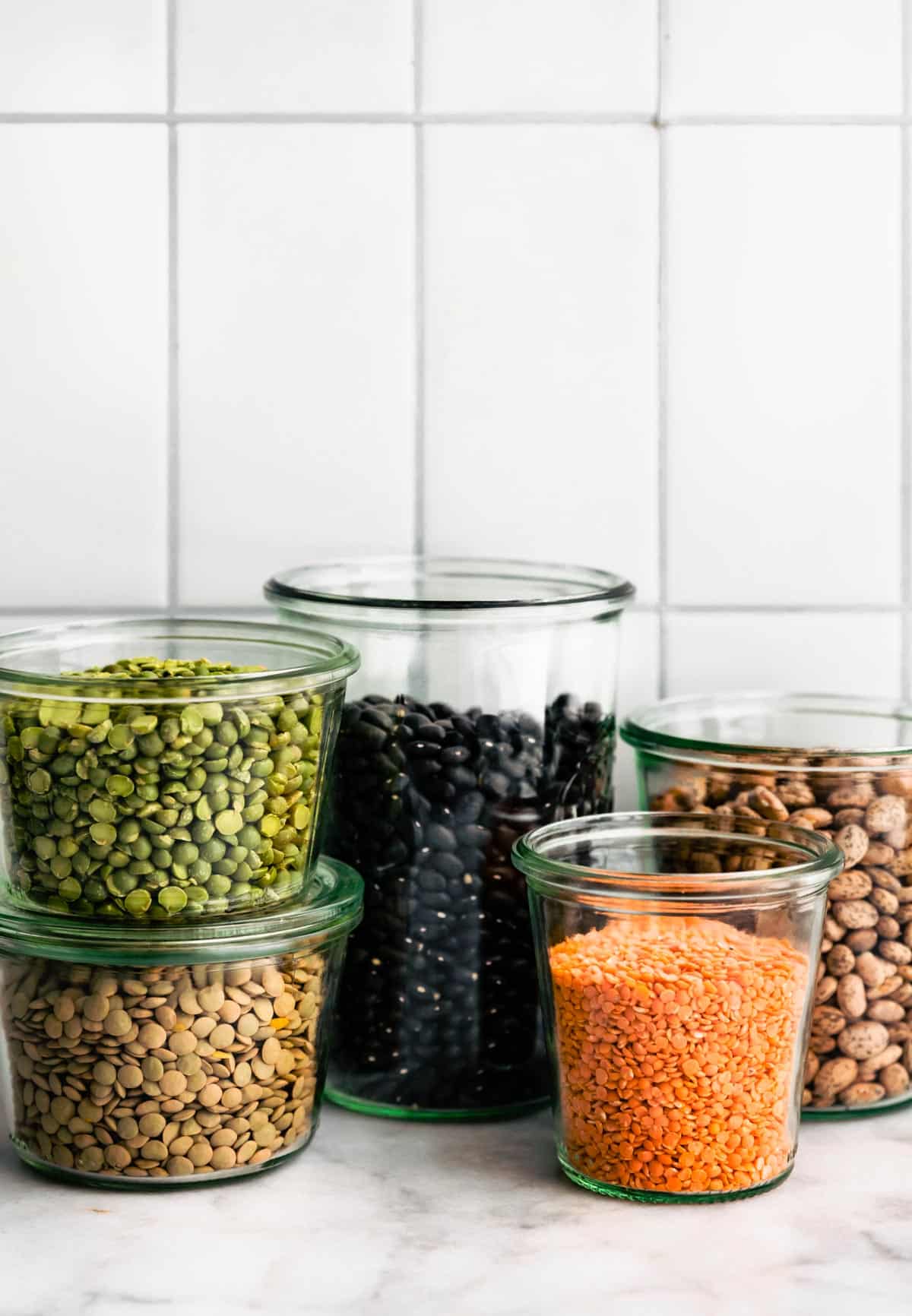
In addition, beans are a rich source of fiber and folate along with various vitamins and minerals including vitamins A and C, calcium iron, potassium, and magnesium. Of course, each type of bean contains different amounts of nutrients, but generally speaking, they’re great for your overall health. (Source)
How to Cook Beans Common Questions
Before we begin explaining how to cook beans, we thought it was important to clear up a few common questions!
When you add salt depends on how you prefer the texture of your beans. For instance, adding it before cooking creates super soft beans. Meanwhile, adding it at the end or near the end of cooking creates a more al-dente texture. Or, salting them after they’re completely cooled will prevent them from absorbing the flavor of other ingredients.
It depends. Adding a small dash of vinegar after cooking will help make your beans easier to digest and helps brighten their flavor. However, when it comes to the texture, the size of the bean matters. Larger, oval beans can benefit from a dash of vinegar as it makes them softer. However, small, round beans can toughen if combined with vinegar.
Technically, you don’t have to soak your beans. There are still ways to create tender, tasty beans of all kinds if you don’t. However, there are several reasons why we recommend taking the extra step.
For instance:
It will help cut the cooking time in half.
The texture of the will be improved resulting in fewer split ends and burst beans.
Some people feel it helps make them more easily digestible.
How to Soak Beans (2 Ways)
People often tell us that not knowing how to properly soak beans is a large reason why they don’t make their own, but it’s not hard at all! In fact, there are two different ways to do it and achieve the same results. Let us explain.
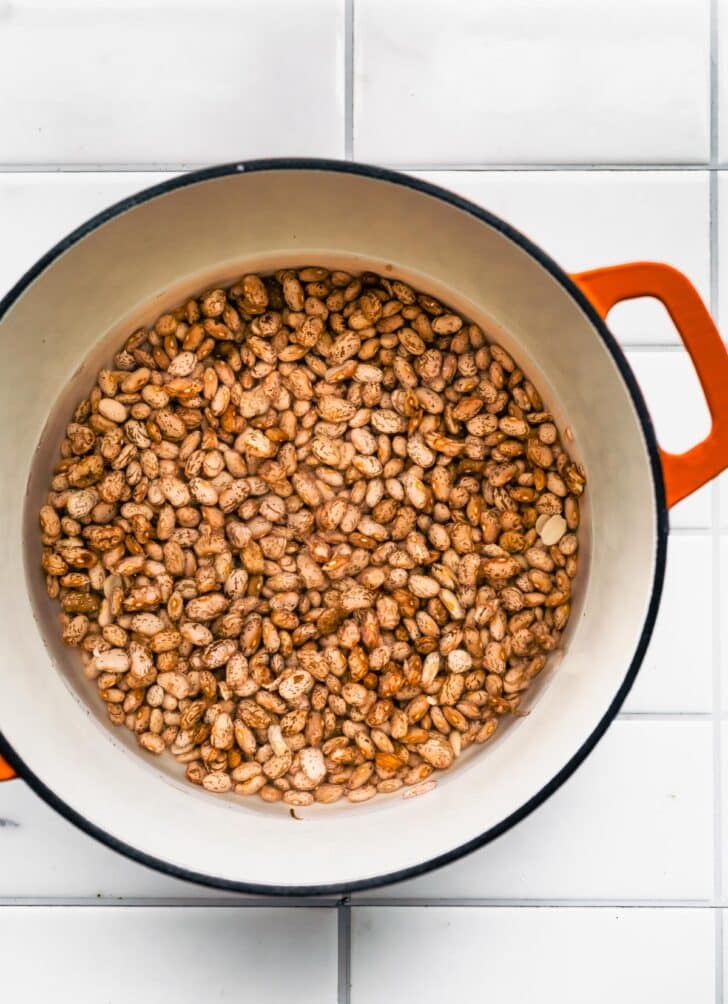
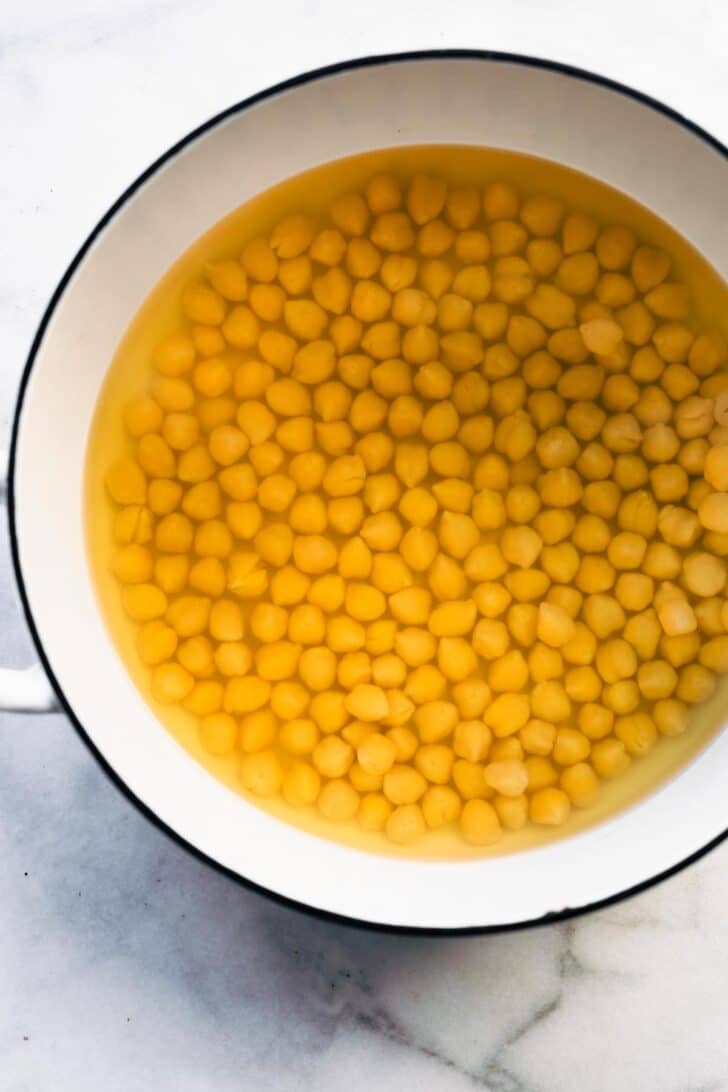
Quick Soak Option – Place 1 pound of beans (around 2 cups) and 8 cups of water in a large pot. Bring the ingredients to a rapid boil over high heat for 2 minutes. Then, remove the pot from the heat, and cover it for 1 hour. Drain the water, rinse your beans, and proceed with cooking.
Overnight Soak Option – Rinse your beans completely to remove any dirt or debris. Then, place them in a large pot, and cover them completely with water. Let the beans sit overnight for at least 6-8 hours. For the best results, we don’t recommend letting your beans soak longer than 10 hours. Otherwise, they might become mushy!
How to Cook Beans (Dried)
Although similar, each type of bean cooks slightly differently. In this post, we cover a handful of the most common varieties, adjusting the methods and cooking times as needed. However, no matter what bean or method you’re using, be sure to soak them beforehand!
Black, Kidney, Navy, Pinto, & White Beans
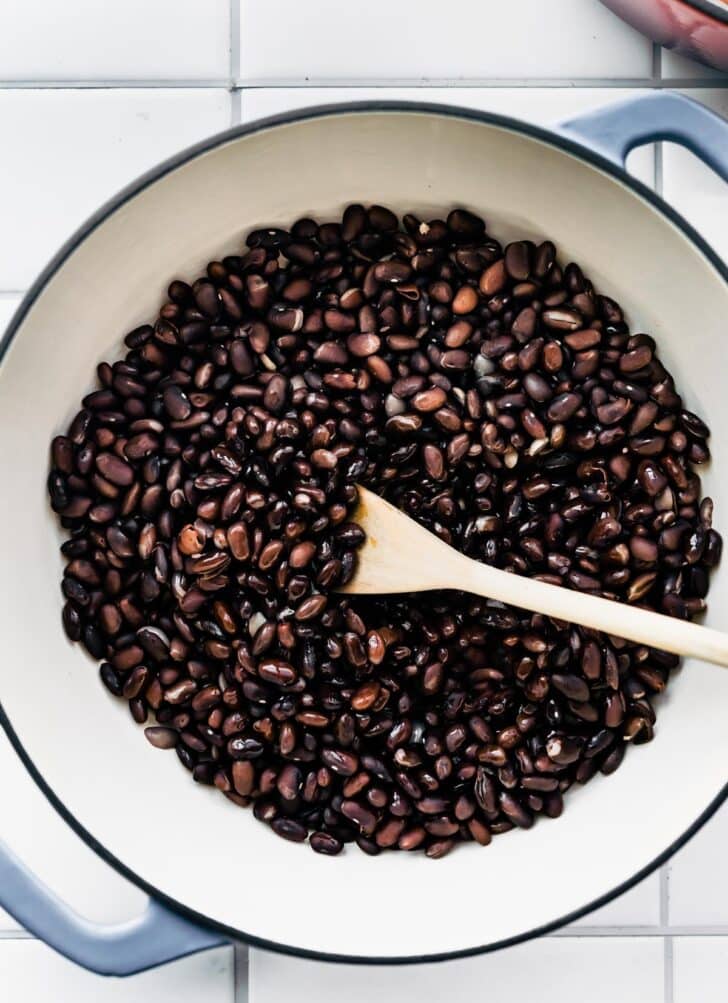
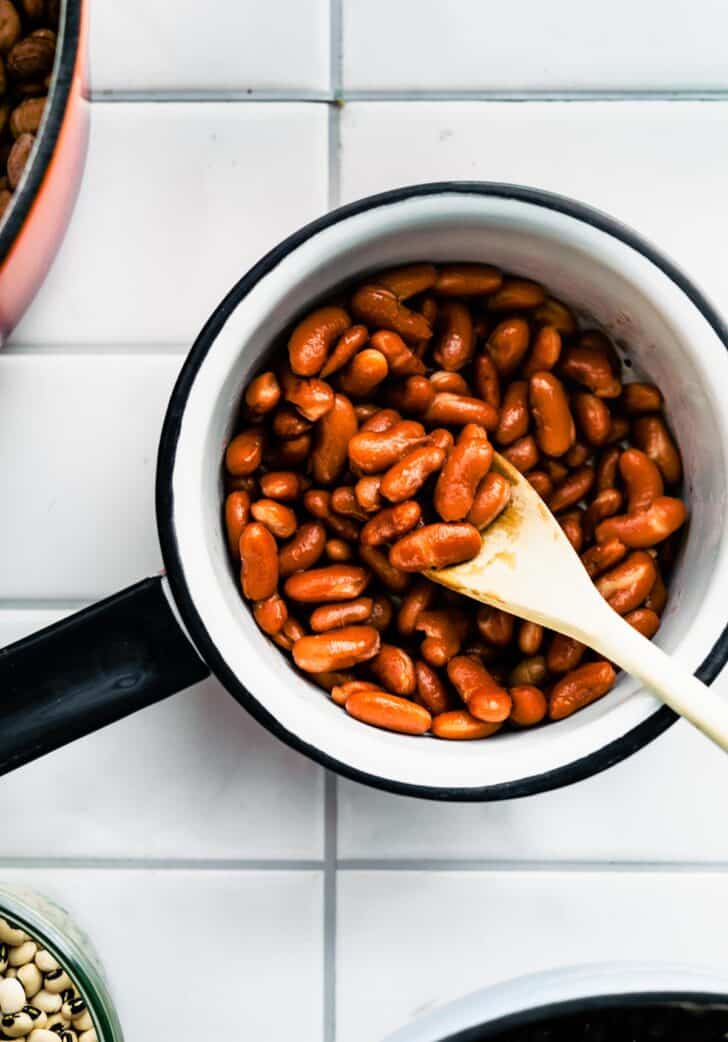
Ingredients You’ll Need:
- 1 pound (or 2 cups) of soaked black, kidney, navy pinto, or white beans
- Water to cover
- ½ teaspoon kosher salt or to taste
Stovetop
- Combine the beans, water, and salt in a large pot.
- Simmer covered, with the lid tilted slightly to reveal a gap, and release steam until the beans are tender.
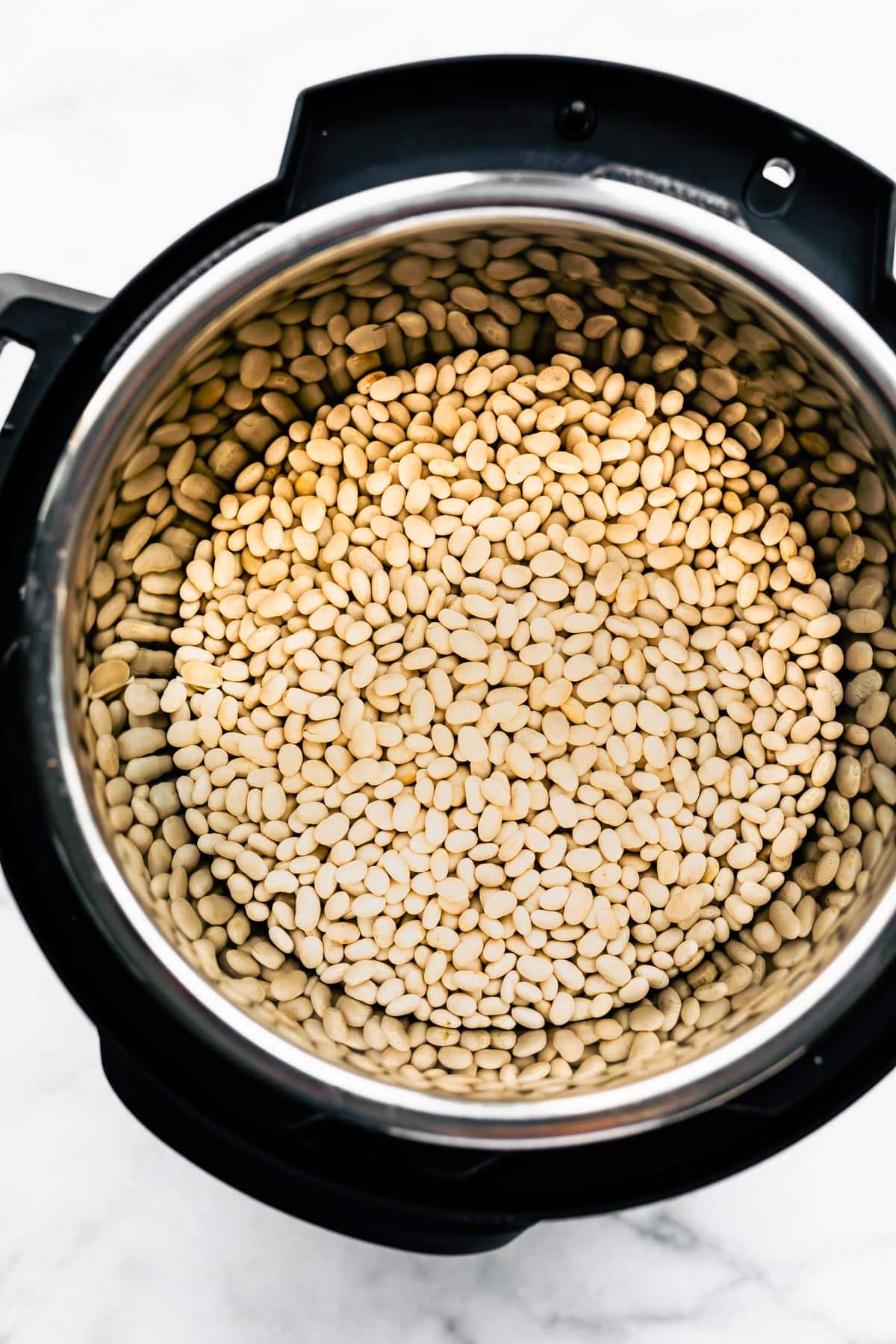
Instant Pot
- Place all of the ingredients in the Instant Pot.
- Lock the lid, and set the vent to closed. Select the MANUAL mode, and cook the beans on high pressure.
Note: View the recipe card below for the specific cooking times of each bean. Black, kidney, pinto, and white beans all require slightly different cooking times.
- Let the Instant Pot naturally release until the pressure subsides or for at least 15-20 minutes before allowing it to quick release.
Pro-Tip: Depending on the age of your beans and specific Instant Pot, allowing the beans to natural release longer than 25 minutes may cause them to become too soft or mushy. This is especially true for smaller varieties like kidney or navy beans.
How to Cook Chickpeas
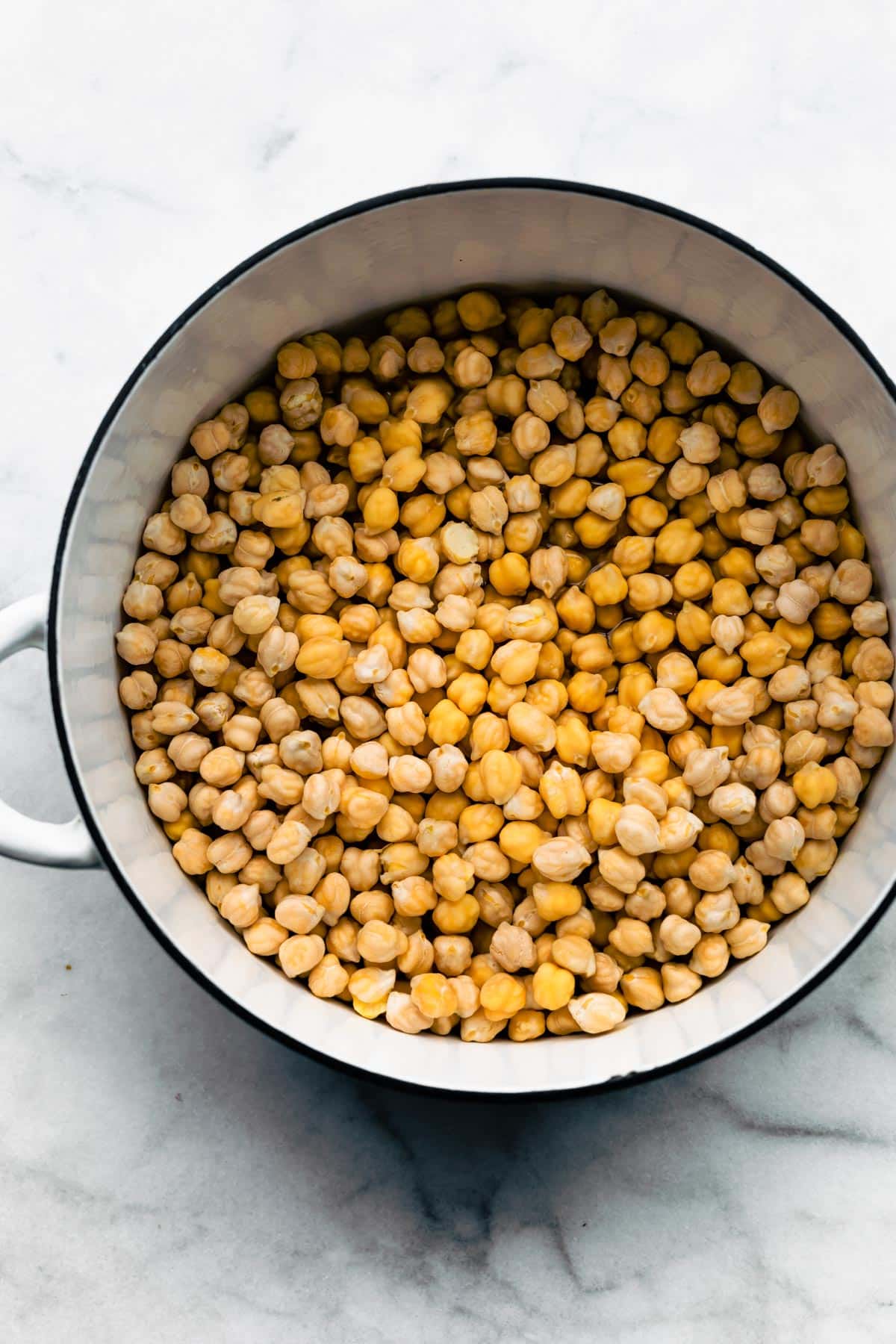
Ingredients You’ll Need:
- 1 pound soaked dried chickpeas (garbanzo beans)
- Water to cover
Stovetop
- Add 2 cups of chickpeas and 6 cups of water to a large pot, and cook over medium heat for 70 minutes or according to the package instructions.
- Let the cooked chickpeas cool in the liquid. Once they have reached room temperature, remove them from a pot with a slotted spoon. Store the chickpeas in some of the reserved cooking liquid to prevent them from drying out.
Pro-Tip: Save the reserved liquid (aka aquafaba) to make recipes like vegan whipped cream or coconut macaroons!
Instant Pot
Note: Unlike other cooking methods and bean types, chickpeas don’t have to be soaked before adding them to the Instant Pot!
- Place the ingredients in the Instant Pot, submerging the chickpeas completely.
- Lock the lid, and set the vent to closed. Select the manual mode, and cook on high pressure.
- Allow the Instant Pot to naturally release until the pressure subsides before doing a quick release.
How to Cook Split Peas
Ingredients You’ll Need:
- 1 cup green split peas
- 2 cups water or vegetable broth
- Salt to taste
Cooking Note: Unlike other beans, split peas do not need to be soaked before cooking. However, they should be thoroughly rinsed in a fine-mesh sieve.
Stovetop
- Add the ingredients to a large pot, and bring them to a boil over high heat, stirring the peas.
- Reduce the heat to low, cover the pot, and simmer until the peas are tender and most of the liquid is absorbed.
- Remove the pot from the heat, and season to taste.
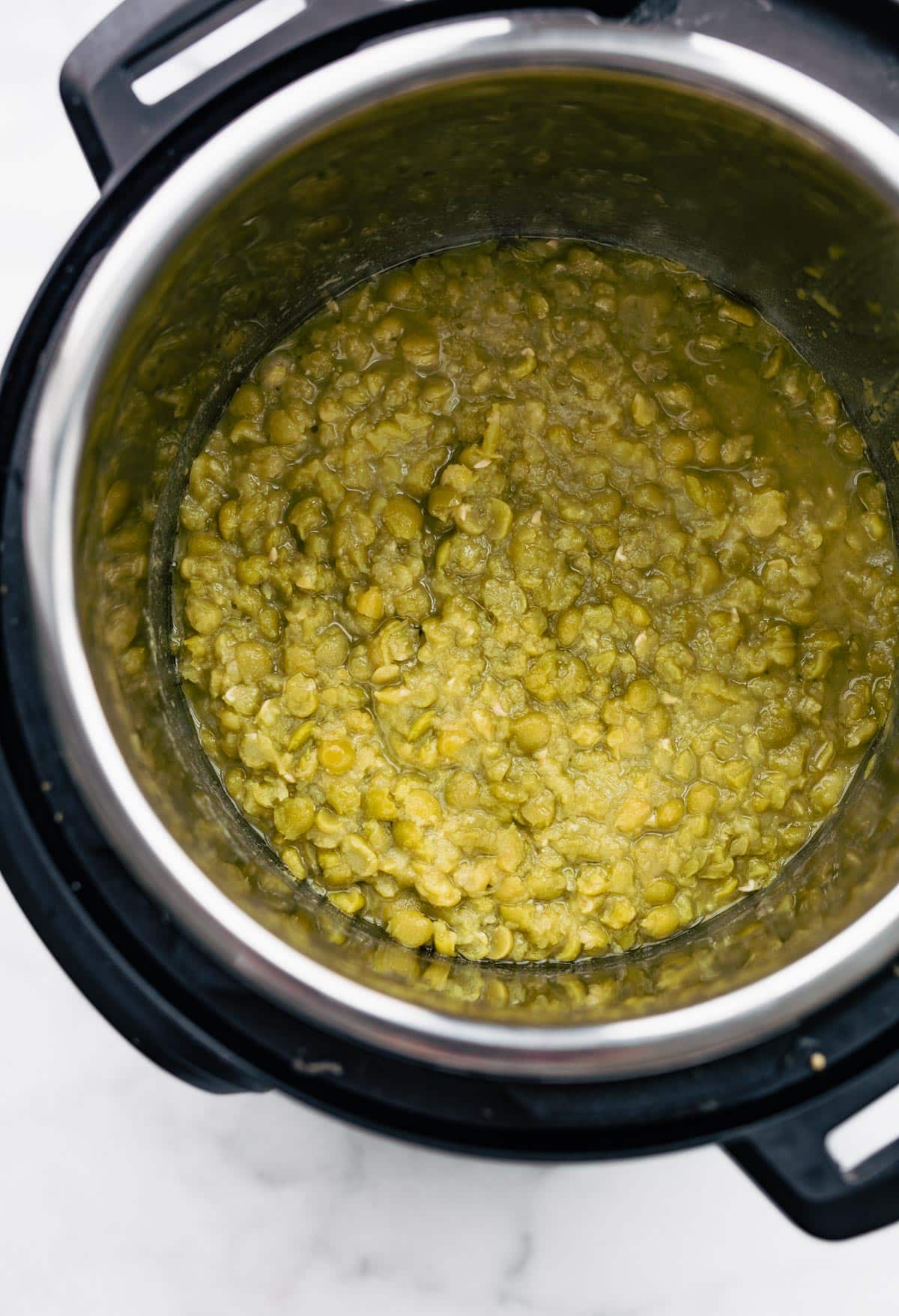
Instant Pot
- Add all of the ingredients to your Instant Pot.
- Lock the lid, set the vent to closed, and select the MANUAL mode to cook on high pressure.
- Allow the pressure to naturally release until most of the pressure subsides. Then, flip the vent to quick release.
- Adjust the seasonings to taste.
Note: You may have noticed that learning how to cook split peas looks a little different than other varieties of beans. This is because these legumes cook more like lentils than other varieties of beans!
Slow Cooker Option
- Place split peas, water or vegetable broth into a slow cooker. Cover and cook on low for 3–4 hours or high for 2 hours. When done, drain any excess water and season with salt to taste.
- Store cooled leftovers in the refrigerator for up to 5 days or in the freezer for up to 1 month. Reheat in a saucepan on the stovetop, adding a little water, as needed, to prevent sticking.
How to Store Cooked Beans
Once cooked and fully cooled, beans can be transferred to an airtight container and kept fresh in the refrigerator for up to 5-7 days or in the freezer for up to 1 month. For the best results, store your beans with a bit of reserved cooking liquid to keep them moist and tender in the fridge.
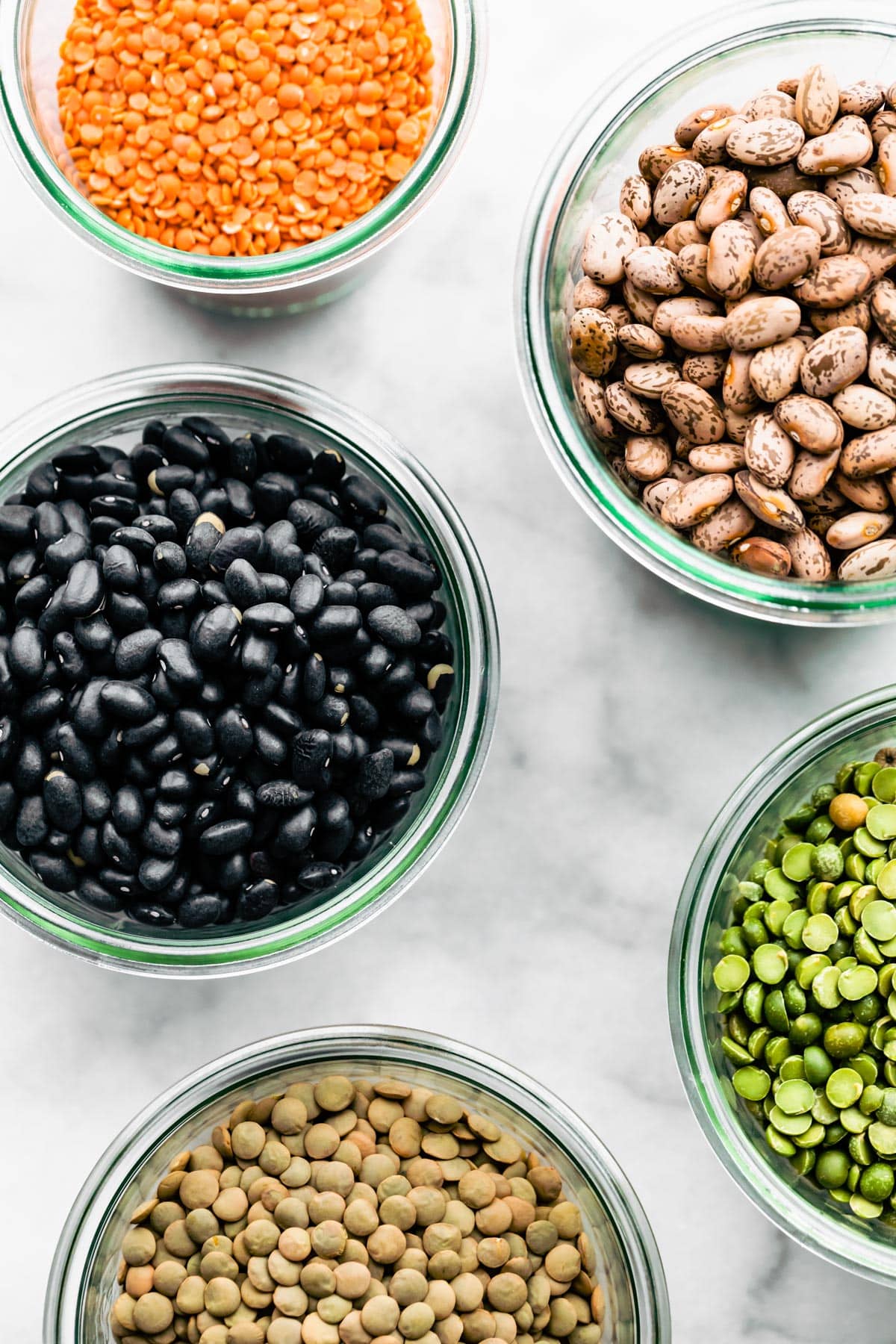
More of Our Favorite
Gluten Free Ways to Use Cooked Beans
Now that you know how to cook beans that are always tender and delicious, it’s time to put them to use with some of our favorite gluten free recipes!
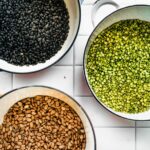
How to Cook Beans – Black, Pinto, Navy, Kidney, Chickpeas & Split Peas
- Total Time: 0 hours
- Yield: 4–5 cups cooked beans/chickpeas and 2 ½ cups cooked split peas 1x
- Diet: Vegetarian
Description
Learn how to cook beans, their health benefits, how and why we soak them, and more to achieve tender, flavorful beans for every recipe and occasion!
Ingredients
Black Beans, Navy Beans, Pinto and Kidney Beans
- 1 lb beans or about 2 cups (black, pinto, navy, kidney)
- Water
- ½ teaspoon kosher salt (or to taste)
Chickpeas
- 1 lb dried chickpeas (garbanzo beans)
- Water
Split Peas
- 1 cup green split peas
- 2 cups water or vegetable broth
- Salt, to taste
Instructions
Prep – Soak Beans
- Quick Soak – In a large pot, place 1 lb beans (around 2 cups) and 8 cups of water. Bring the pot to a rapid boil for 2 minutes. Remove from heat and cover for 1 hour. Drain water and rinse beans.
- Overnight Soak – In a large pot, rinse beans then fully cover beans with water. Cover the pot and let it sit on the countertop overnight (6-8 hours) or place in the refrigerator if soaking longer than 8 hours. Drain water and rinse beans.
- No soak – No soaking is required for split peas, BUT rinse the split peas well in a fine-mesh sieve removing any debris.
Stovetop Option
Black Beans, Navy Beans, Pinto and Kidney Beans (w/ Soaked Beans)
- To the large pot of rinsed beans, add 6 cups of hot water and salt (if adding, see notes). Simmer gently with lid tilted 1-½ to 2 hours or until tender.
- Store cooked beans in a bit of the cooking liquid to keep them moist and tender while in the fridge. Store beans in an airtight container in the refrigerator for up to 5-7 days or in the freezer for 1 month.
Chickpeas(w/ Soaked Beans)
- In a large saucepan or pot, cook 2 cups of the soaked chickpeas and 6 cups of water for roughly 70 minutes or according to the package instructions.
- Once cooked, let the chickpeas cool in the liquid until room temperature. Remove the chickpeas with a clean slotted spoon and store in a bit of the cooking liquid to keep them moist and tender while in the fridge. Store leftovers covered in the refrigerator for up to 4-5 days, or in the freezer for up to 1 month.
Split Peas
- In a large soup pot, add split peas, water or vegetable broth . Bring to a boil over high heat. Stir peas.
- Reduce heat, cover, and simmer until tender and most of the liquid is absorbed or about 20 minutes.
- Remove from heat and season with salt to taste.
- store cooled leftovers in the refrigerator for up to 5 days or in the freezer for up to 1 month. Reheat in a saucepan on the stovetop, adding a little water, as needed, to prevent sticking.
Instant Pot Option
Black Beans, Navy Beans, Pinto and Kidney Beans (w/ Soaked Beans)
- Place soaked beans, enough water to completely cover the beans and salt (if adding, see notes) to the inner pot of a pressure cooker.
- Lock the Instant Pot lid and set the vent to closed. Select MANUAL mode and cook beans on high pressure for the following times:
- Black & Pinto Beans – 8-10 minutes
- Navy Beans – 7-9 minutes (soaked 8 hours) note – 7 minutes was spot on with 8 hour soak. If you soak navy beans for less than 8 hours (like 4 -6) adjust time to 8-10 minutes. See notes*
- Kidney – 15-25 minutes
- Allow to naturally release until pressure subsides, or at least 15- 20 minutes before doing a quick release. Note – Depending on the age of beans and your pressure cooker, natural release over 25 minutes may cause beans to become too soft or mushy, especially for smaller beans like navy beans. See notes for tips!
- Store cooked beans in a bit of the cooking liquid to keep them moist and tender while in the fridge. Store beans in an airtight container in the refrigerator for up to 5-7 days or in the freezer for 1 month.
Chickpeas(w/ Soaked Beans)
- Place soaked chickpeas, salt and enough water to completely cover the chickpeas in the inner pot of a pressure cooker.
- Lock the Instant Pot lid and set the vent to closed. Select MANUAL mode and cook chickpeas on high pressure for 10-15 minutes.
- Allow to naturally release until pressure subsides, or at least 20 minutes before doing a quick release.
- Store cooked chickpeas in a bit of the cooking liquid to keep them moist and tender while in the fridge.
Split Peas
- Place split peas, water or vegetable broth to inner pot of a pressure cooker.
- Lock the Instant Pot lid and set the vent to closed. Select MANUAL mode and cook split peas on high pressure for 8 -10 minutes.
- Allow to naturally release until pressure subsides, or at least 15 minutes before doing a quick release. Season with salt to taste.
- Split peas are best eaten when fresh. Store cooled leftovers in the refrigerator for up to 5 days or in the freezer for up to 1 month. Reheat in a saucepan on the stovetop, adding a little water, as needed, to prevent sticking.
*See blog post for slow cooker split peas
Notes
TIPS for instant pot – The pressure cooking time for unsoaked is “generally” double the time as soaked. Please note that depending on the age of beans and your pressure cooker, the texture (post natural release) will vary. Lower end range will result in firmer beans for tacos/salads/soups. Higher end will result in a soft buttery texture for blending or mashing. Better to undercook then finish cooking on stove top if beans are too dense. *Navy beans can become mushy quite fast, so start with the shortest time and adjust to desired taste/texture.
Salt – Add salt for desired texture – add before for soft beans or near end for more al dente. With some beans, salting too early can affect the tenderness of your beans, and salting after they’re completely cooked will prevent the beans from absorbing the flavor.
Nutrition below based on ½ cup variety of cooked beans.
- Prep Time: 10
- soak time up to 24 hours:
- Cook Time: 15-90 minutes
- Category: side dish
- Method: stove/instant pot
- Cuisine: multicultural
Nutrition
- Serving Size: ½ cup cooked beans
- Calories: 90-120
- Sugar: 0-3 grams
- Sodium: 0-2 mg
- Fat: 0-2 grams
- Saturated Fat: 0
- Unsaturated Fat: 0
- Trans Fat: 0
- Carbohydrates: 17-22 grams
- Fiber: 6-10 grams
- Protein: 7-11 grams

Do you have questions, feedback, or tips about this recipe? Leave a comment below with any questions or feedback you’d like to share!
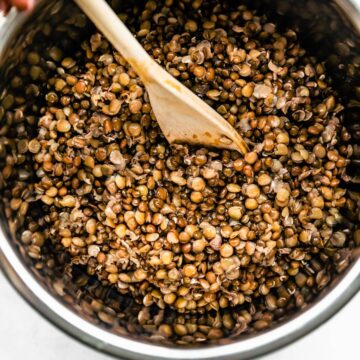
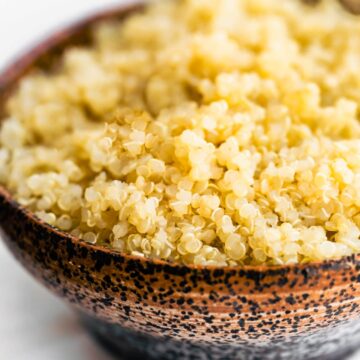
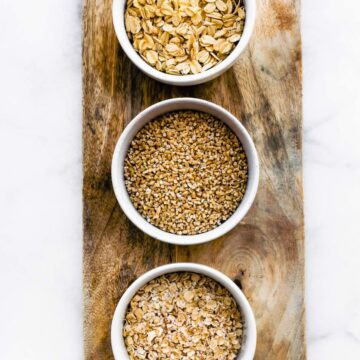
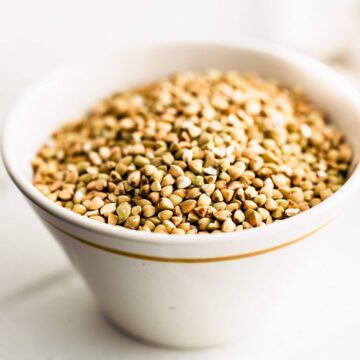


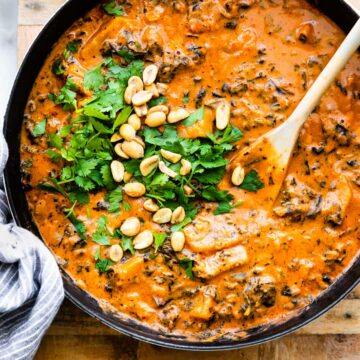
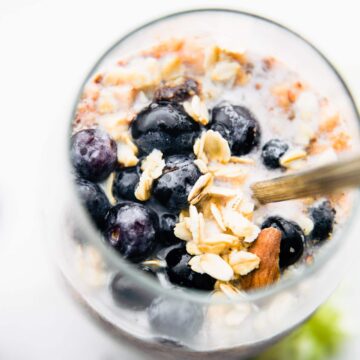
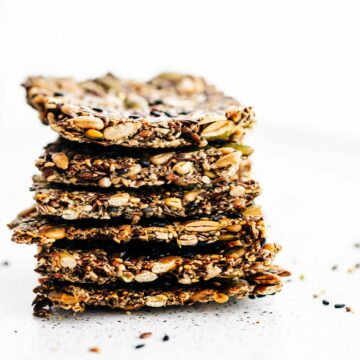
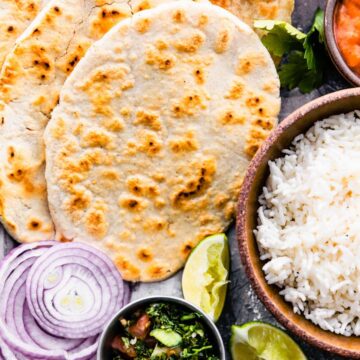


Rate & Comment